Tổng quan
FS-HDR is a powerful universal converter/frame synchronizer designed specifically to meet the High Dynamic Range (HDR) and Wide Color Gamut (WCG) needs of broadcast, OTT, production, post, and live event AV environments, where real time, low latency processing and color fidelity is required for 4K/UltraHD and 2K/HD workflows. Developed in partnership with Colorfront, the FS-HDR’s HDR/WCG functionality is powered by the Colorfront Engine™ proprietary video processing algorithms.
In Single Channel Mode, FS-HDR also serves as a full, 1-channel up, down, and cross-converter for up to 4K/UltraHD HDR/WCG transformations. In Four Channel Mode, FS-HDR offers four independent channels of 2K/HD HDR/WCG transformations, with both modes providing up, down, and cross conversions, and high quality frame syncing, all in a slim, 1RU rackmount form factor.
Tính năng
Colorfront Engine™
Maintaining Perceptual Integrity
FS-HDR’s HDR/WCG capabilities leverage video and color space processing algorithms within the Colorfront Engine, specially licensed by AJA from Colorfront and developed by Colorfront’s CTO Bill Feighter and Lead Engineer Tamas Perlaki.
Powered by the Colorfront Engine, FS-HDR’s extensive HDR and WCG processing support enables real time processing of a single channel of 4K/UltraHD/2K/HD, including down-conversion to HD HDR or up to four channels of 2K/HD simultaneously. FS-HDR also enables the conversion of popular camera formats from multiple vendors into the HDR space, plus conversion to and from BT.2020/BT.709 as needed, critical for the widespread acceptance of HDR alongside SDR in broadcast and OTT workflows. TV Mode and Live Mode are also offered in AJA’s ColorBox.
Colorfront Engine TV Mode provides specific conversions and simplified controls for highlight and roll-off management in live television broadcast productions.
Colorfront Engine Live Mode provides conversions and controls that support live applications such as broadcast, OTT, A/V, and venue.
Colorfront Engine Film Mode provides conversions and controls, including ASC CDL, for applications such as on-set camera preview and look creation.
FS-HDR Colorfront Engine TV Mode
TV Mode is an operational mode that provides a simple to use transform selection interface with minimal controls required for a live television production. It addresses color correction and camera correction while introducing new controls essential for HDR/SDR transforms, including Sony S-Log3. These new controls for Brightness, Highlight, Super Highlight, and Colorfulness are designed to enable operators to produce high quality SDR and HDR video by processing within the guardrails of Colorfront’s perceptual processing algorithm, which will maintain perceived color, hue, and saturation without hard clipping artifacts and maintaining proper color relationships. These controls help manage highlights and roll-off in HDR to SDR conversions. They also improve the quality of the SDR output by using more of the information available in the HDR source. Shouldn’t your SDR deliverable benefit from all the effort put into your HDR production?
The Colorfront Engine uses conversion algorithms based on the human visual system that provide better SDR to HDR color transformation, as well as improving the overall look of SDR sources used in your HDR production. To protect and maintain color fidelity of SDR brand colors used in graphics or in-camera, the combination of SDR to HLG and HLG to SDR transforms using the Colorfront Engine TV Mode provides the necessary “round-tripping” capabilities.
A perceptual transform integrates the various human perceptual phenomena into a model or perceptually linear transform space. Unique to the FS-HDR Colorfront Engine TV Mode, transforms are calculated in this perceptual space. Dynamic range, surround illumination, color volume, perceived saturation, and perceived hue are accounted for.
FS-HDR for Real Time HDR Workflows
Deliver more immersive content to audiences with the power and flexibility of AJA FS-HDR. See how FS-HDR and the Colorfront Engine can simplify real time HDR/WCG transformations and make it easy to maintain the look you’ve worked to achieve across SDR to HDR, HDR to HDR, and HDR to SDR for both 4K and HD needs.
Real Time HDR Converter
The pursuit of High Dynamic Range (HDR) is the dream of getting closer to the Human Visual System (HVS) in all we experience as viewers. FS-HDR has been created to get us all there faster with a low profile, stand-alone device uniquely designed to bridge SDR to HDR, HDR to SDR, and HDR to HDR, all in real time.
HDR Conversions:
- HDR to HDR
- SDR to HDR
- HDR to SDR
WCG Conversions:
- BT.709 and BT.2020
Up and Down Conversion examples:
- Converting HD SDR BT.709 sources to UltraHD HDR BT.2020
- Converting UltraHD HDR BT.2020 sources to HD SDR BT.709 or HD HDR BT.2020
Thông số kỹ thuật
HDR/WCG Real Time Processor
- HDR Conversions
- HDR to HDR
- HDR to SDR
- SDR to HDR
- Colorimetry
- BT.709 and BT.2020
Video Processing Transforms
- Each processing channel can independently select from:
- Colorfront Engine – TV Mode
- Colorfront Engine – Live Mode
- Colorfront Engine – Film Mode
- BBC HLG 3D LUTs
- NBCU 3D LUTs
- User 3D LUTs
- Dynamic 3D LUTs
Colorfront Engine (CFE) Advanced HDR Conversions
- Processing Based on Human Perception Model
- Perceptually optimized color volume remapping
- Preserves the original creative intent
- Parametric controls including HDR functions and color corrector
- TV Mode for applications such as television broadcast
- Live Mode for applications such as broadcast, OTT, A/V
- Film Mode for applications such as on-set camera preview and look creation
- Input Video Dynamic Range/Color Gamut
- SDR BT.709 100 Nits
- SDR Extended BT.709
- PQ BT.2020 1000 Nits
- PQ P3D65 1000 Nits
- Hybrid Log Gamma BT.2100
- HLG Extended BT.709
- HLG Extended BT.2100
- Sony S-Log3 S-Gamut3
- Sony S-Log3 S-Gamut3 Cine
- Sony S-Log3 BT.2020
- ARRI Log C Wide Gamut
- ARRI LogC4 Wide Gamut 4
- Panasonic V-log
- RED Log3G10 Wide Gamut
- Canon Log 2
- Canon Log 3
- ACEScct (Film mode only)
- Output Video Dynamic Range/Color Gamut
- SDR BT.709 100 Nits
- SDR Extended BT.709
- PQ BT.2020 1000 Nits
- PQ BT.2020 ConstrainP3
- PQ P3D65 1000 Nits
- Hybrid Log Gamma BT.2100
- HLG Extended BT.709
- HLG Extended BT.2100
- Sony S-Log3 S-Gamut3
- Sony S-Log3 BT.2020
- ARRI Log C Wide Gamut
- ARRI LogC4 Wide Gamut 4
- ACEScct (Film mode only)
- SDR Preview mode
- Ambient Light Compensation control
- PQ Output Nit level: 48-4000 Nit
- PQ Output P3 Colorspace Clamp
- Exposure, Color Temp, Tint controls
- TV Mode controls
- Highlight management: Brightness, Highlight, Super Highlight
- Color Correction: Lift, Gamma, Gain, Saturation
- Camera Correction: Exposure, Color Temp, Tint
- Live Mode controls
- Grading: Lift, Gamma, Gain,
- SDR Softness control
- ITU-R BT.2408 control
- Film Mode controls
- Grading space: LogC, ACEScct, or S-Log3
- ACES CDL: Offset, Power, Slope, Saturation
- A/B Look Selection
- A/B Look Mix
- MasterLook
- MasterBroadcast
- MasterLookBright
- MasterLookCool
- MasterLookLowCon
- MasterLookSoftColor
- MasterLookVivid
- MasterLookWarm
- MasterPastelD60
- MasterPastelD65
- Agfa
- ARRI K1S1
- Bleach
- ClassicFilm
- Ektachrome
- FilmBlended
- FilmBlendedLoCon
- FujiDI
- FujiXD
- GenericFilm
- Kodachrome
- ReversalClassic
BBC HLG 3D LUT HDR Conversions
- Mathematical dynamic range mapping per ITU-R BT.2408
- SDR/BT.709 Scene Referred to HLG/BT.2100 v1.7
- SDR/BT.709 Scene Referred to HLG/BT.2100 Strict v1.7
- SDR/BT.709 Scene Referred UpMap to HLG/BT.2100 v1.7
- SDR/BT.709 Scene Referred UpMap to HLG/BT.2100 Strict v1.7
- SDR/BT.709 Display Referred to HLG/BT.2100 v.1.7
- SDR/BT.709 Display Referred UpMap to HLG/BT.2100 v1.7
- SDR/BT.2020 Display Referred to HLG/BT.2100 v1.7
- SDR/BT.2020 Display Referred UpMap to HLG/BT.2100 v1.7
- PQ 1000 Nits Display Referred to HLG/BT.2100 v1.7
- PQ 4000 Nits Display Referred to HLG/BT.2100 v1.7
- S-Log3/BT.2020 100% Scene Referred to HLG/BT.2100 v1.7
- S-Log3/BT.2020 200% Scene Referred(SR-Live) to HLG/BT.2100 v1.7
- HLG/BT.2100 to SDR/BT.709 Scene Referred v1.7
- HLG/BT.2100 to SDR/BT.709 Scene Referred Strict v1.7
- HLG/BT.2100 to SDR/BT.709 Display Referred Color Appearance Model v1.7
- HLG/BT.2100 to SDR/BT.709 Display Referred Super White v1.7
- HLG/BT.2100 to PQ 1000 Nits Display Referred v1.7
- HLG/BT.2100 to SDR/BT.2020 Display Referred Super White v1.7
- SDR/BT.709 Scene Referred UpMap to HLG/BT.2100 to SDR/BT.709 Display Referred v1.7
NBCU 3D LUT Processing
- NBCU LUTs developed by NBCUniversal Media, LLC
- 1-NBCU_SDR2HLG_DL_v1.1, SDR UpMap to HLG using Display Light v1.1
- 2-NBCU_SDR2HLG_SL_v1, SDR to HLG using Scene Light v1.0
- 3-NBCU_HLG2SDR_DL_v1.1, HLG to SDR using Display Light v1.1
- 4-NBCU_SDR2PQ_DL_v1, SDR UpMap to PQ using Display Light v1.0
- 5-NBCU_PQ2SDR_DL_v1, PQ to SDR using Display Light v1.0
- 7-NBCU_HLG10002PQ_v1, HLG 1000 Nits to PQ v1.0
User 3D LUT Processing
- Supports custom 33 point .cube format 3D LUTs
- Tetrahedral LUT interpolation
- Configurable Colorspace, Scale, and HDR Transfer Characteristic
- Nonvolatile storage of 10 fixed LUTs
Dynamic 3D LUT Processing
- Supports third party apps for automatic loading and display of 3D LUTs
- Reflects dynamic changes in real time from source software
- Supported by Pomfort Livegrade Pro
- Supported by TV Logic WonderLookPro
Modes of Operation
- Four Channel Mode – Four Independent 2K, HD, or SD Video Processors
- Single Channel Mode – One 4K, UltraHD, 2K, HD, or SD Video Processor
- Enhanced Single Channel Mode – One 4K, UltraHD Video Processor with simultaneous 4K/UltraHD and 2K/HD/SD outputs
Video Formats
- (4K) 4096x2160p 23.98, 24, 25, 29.97, 30, 50, 59.94, 60
- (4K) 4096x2160PsF 23.98, 24, 25, 29.97, 30
- (UltraHD) 3840x2160p 23.98, 24, 25, 29.97, 30, 50, 59.94, 60
- (UltraHD) 3840x2160PsF 23.98, 24, 25, 29.97, 30
- (2K) 2048x1080p 23.98, 24, 25, 29.97, 30, 50, 59.94, 60
- (HD) 1920x1080p 23.98, 24, 25, 29.97, 30, 50, 59.94, 60
- (HD) 1920x1080PsF 23.98, 24, 25, 29.97, 30
- (HD) 1920x1080i 50, 59.94, 60
- (HD) 1280x720p 50, 59.94, 60
- (SD) 625i 50
- (SD) 525i 59.94
- YCbCr, 4:2:2, 10-bit
Video Input Digital
- 4x 3G-SDI inputs, 4x BNC
- 4x 12G-SDI inputs, 4x Fiber or HD-BNC (optional SFP modules)
- SFP coax module, 12G/6G-SDI, dual HD-BNC
- SFP fiber module, 12G/6G-SDI, Single Mode, dual LC or single LC, SMPTE 297
- SFP fiber module, 3G-SDI, Single Mode, dual LC, single LC, or single SC, SMPTE 297
- SFP fiber module, 3G-SDI, Multi-Mode, dual LC or single LC, SMPTE 297
- 12G/6G/3G/HD/SD, SMPTE 259/292/424/2081/2082
- Single Link 12G/6G-SDI (with optional SFP module)
- Quad Link 3G-SDI Level A or B DL (4x 3G), SMPTE 425-5
- Dual Link 3G-SDI Level B DS (2x 3G), SMPTE 425-3
- Single Link 3G-SDI Level A, B DL, or B DS, SMPTE 425
- Quad Link HD-SDI (4x 1.5G)
- Dual Link HD-SDI (2x 1.5G), SMPTE 372
- Single Link HD/SD
- Quadrant (Square Division) or 2SI (Two Sample Interleave) 4K/UltraHD input pixel mapping
- 8x 1 selector feeds video processor(s)
Video Output Digital
- 4x 3G-SDI outputs, 4x BNC
- 4x 12G-SDI outputs, 4x fiber or HD-BNC (optional SFP modules)
- SFP coax module, 12G/6G-SDI, dual HD-BNC
- SFP fiber module, 12G/6G-SDI, Single Mode, dual LC or single LC, SMPTE 297
- SFP fiber module, 3G-SDI, Single Mode, dual LC, single LC, or single SC, SMPTE 297
- SFP fiber module, 3G-SDI, Single Mode, dual LC, SMPTE 297
- SFP fiber module, 3G-SDI, Multi-Mode, dual LC or single LC, SMPTE 297
- 12G/6G/3G/HD/SD, SMPTE 259/292/424/2081/2082
- Single Link 12G/6G-SDI (with optional SFP module)
- Quad Link 3G-SDI Level A or B DL (4x 3G), SMPTE 425-5
- Dual Link 3G-SDI Level B DS (2x 3G), SMPTE 425-3
- Single Link 3G-SDI Level A, B DL, or B DS, SMPTE 425
- Quad Link HD-SDI (4x 1.5G)
- Dual Link HD-SDI (2x 1.5G), SMPTE 372
- Single Link HD/SD
- Quadrant (Square Division) or 2SI (Two Sample Interleave) 4K/UltraHD output pixel mapping
Monitor Output Digital
- Monitor Output is a copy of the Main Output
- 1x BNC, 1x 3G-SDI output
- 3G-SDI/HD/SD, SMPTE 259/292/424, 10-bits
- 4K/UltraHD automatically down-converted to 2K/HD
- SDI Monitor Output is configurable when FS-HDR is operating in Enhanced Single Channel Mode
- Video Formats
- (2K) 2048x1080p 23.98, 24, 25, 29.97, 30, 50, 59.94, 60
- (HD) 1920x1080p 23.98, 24, 25, 29.97, 30, 50, 59.94, 60
- (HD) 1920x1080PsF 23.98, 24, 25, 29.97, 30
- (HD) 1920x1080i 50, 59.94, 60
- (HD) 1280x720p 50, 59.94, 60
- (SD) 625i 50
- (SD) 525i 59.94
- Transforms
- Colorfront Engine – TV Mode, select from 4/5 Dynamic Range & Gamut input/output settings
- Colorfront Engine – Live Mode, select from 16/11 Dynamic Range & Gamut input/output settings
- Colorfront Engine – Film Mode, select from 17/12 Dynamic Range & Gamut input/output settings
- BBC HLG LUTs, select from 19 LUTs
- NBCU LUTs, select from 6 LUTs
- USER LUTs, select from 10 LUTs
- Video Formats
- 1x HDMI, 1x HD output
- 2K/HD/SD, HDMI v1.4a
- 4K/UltraHD automatically down-converted to 2K/HD
- HDR Infoframe generation to support HDR displays per HDMI v2.0b and CTA-861-G
- Crop control
Video Processing
- Motion adaptive deinterlacer, controllable
- Proc amp controls
- Color corrector
- Legalizer
- Frame rate conversion/film cadence removal/insertion (3:2, 1:2, 2:1, 2:3)
- Adjustable delay 0-20 frames with H and V timing controls in lines and pixels
- Freeze (manual or on input signal loss) to black or last good frame
- Matte generator for background fill
- Video test generator with SDR and HDR patterns
- Nominal video delay HD/SD, 2 frames (LFR), 4 frames (HFR)
Ancillary Data
- All embedded ANC packets pass-through when output format equals input format
- Ancillary Timecode (LTC, VITC1, VITC2) translation and pass-through for wide range of conversions
- SCTE-104 and Closed Captioning pass-through for wide range of conversions
- Closed Captioning conversion (CEA-608/CEA-708)
- AFD input detection, down-convert control, and output pass-through or overwrite
- Configurable SDI output VPID for Colorimetry and Transfer Characteristic
Format Conversion
- Convert any supported input format to any supported output format, within the same frame rate family. These three families are:
- 59.94, 29.97, 23.98
- 50, 25
- 60, 30, 24
Scaling
- Supported in 2K/HD/SD formats
- Zoom in and out
- Reposition
- Region of Interest (ROI)
Up-Conversion
- Hardware 10-bit
- Zoom 14:9: results in a 4:3 image zoomed slightly to fill a 14:9 image with black side bars
- Zoom Letterbox: results in image zoomed to fill fullscreen
- Zoom Wide: results in a combination of zoom and horizontal stretch to fill a 16:9 screen; this setting will introduce a small aspect ratio change
Down-Conversion
- Hardware 10-bit
- Anamorphic: fullscreen
- Letterbox: image is reduced with black top and bottom added to image area with the aspect ratio preserved
- Crop: image is cropped to fit video output format
Aspect Ratio Conversion for SD to SD
- Letterbox: Transforms SD anamorphic material to a letterboxed image
- H Crop: Produces a horizontally stretched effect on the image; transforms anamorphic SD to full frame
- SD Pillarbox: Produces an image in the center of the screen with black borders on the left and right sides and an anamorphized image in the center
- V Crop: Transforms SD letterbox material to an anamorphic image
Audio Input Digital
- 48 kHz sample rate
- 8x SDI embedded inputs (16-Channels each)
- 128-channels, 24-bit (20-bit SD), SMPTE 272/299
- 8x balanced AES inputs (16-Channels), 1x DB-25
- 16-channels, 24-bit, AES-3
- 2x MADI inputs, 1 BNC, 1x ST Fiber
- 128-channels, 24-bit, AES-10
Audio Output Digital
- 48 kHz sample rate
- 1x SDI embedded output per Video Processor (16-Channels each)
- 16-channels (in single Video Processor mode), 24-bit (20-bit SD), SMPTE 272/299
- 64-channels (in four Video Processor mode), 24-bit (20-bit SD), SMPTE 272/299
- 8x balanced AES outputs (16-Channels), 1x DB-25
- 16-channels, 24-bit, AES-3
- 2x MADI outputs, 1x BNC, 1x ST Fiber
- 128-channels, 24-bit, AES-10
Audio Processing
- 277×208 mono audio matrix, route 1 to 1, 1 to many
- Inputs: 128 embedded, 16 AES, 128 MADI, 2 stereo mixdowns, 3 tone generator
- Outputs (Four Channel Mode): 16 AES, 128 MADI, 64 embedded
- Outputs (Single Channel Mode): 16 AES, 128 MADI, 16 embedded
- Input adjustment controls for each channel
- Gain +18 to -18 dB in 0.5 dB steps
- Phase invert
- Input adjustment controls for each channel pair
- Delay -16ms to +1sec in 20.8 us steps
- Audio delay can automatically follow video timing delay adjustments
- Two independent 5.1 or 7.1 to stereo mixdown processors with gain adjust
- High quality Sample Rate Conversion supported on all audio inputs
- SRC bypass for non-PCM audio (e.g. Dolby E, AC-3, etc)
- Audio tone generator (mute, 400 Hz, 1 kHz)
Reference Input
- External, 2x BNC
- Looping, nonterminating
- Blackburst or tri-level sync
Genlock
- Lock to External Reference
- Lock to SDI input 1 thru 8
- Free run based on Temperature Compensated Crystal Oscillator
Network Interface
- 1x RJ-45, 10/100/1000 Ethernet
- Embedded web server for remote control
- REST Interface
- SNMP
User Interface
- Display
- Keypad with status LEDs
- Two rotary/push knobs
- Comprehensive alarm indicators
Presets
- Four Channel and Single Channel Mode each support 40 system level Presets
GPI
- 1x 25-pin D-Connector
- Four optically isolated GPI inputs
- Four optically isolated GPO outputs
Size (w x d x h)
- 17.5” x 16.0” x 1.75” (1RU) (444.5 x 406.4 x 44.45 mm)
Weight
- 7.9 lb (3.6 kg)
Power
- 100-240 VAC 50/60 Hz (Dual, redundant power supplies), 55W typical; 70W max.
Environment
- Safe Operating Temperature: 0 to 40 C (32 to 104 F)
- Safe Storage Temperature (Power OFF): -40 to 60 C (-40 to 140 F)
- Operating Relative Humidity: 10-90% noncondensing
- Operating Altitude: <3,000 meters (<10,000 feet)


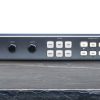
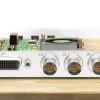
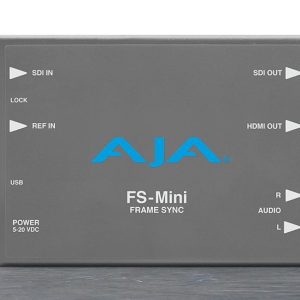

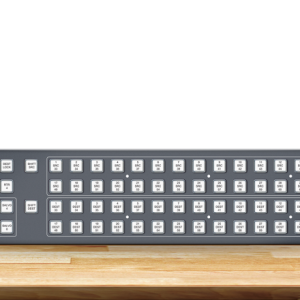

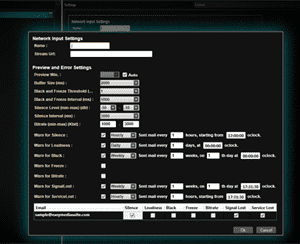
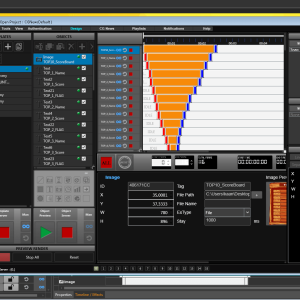
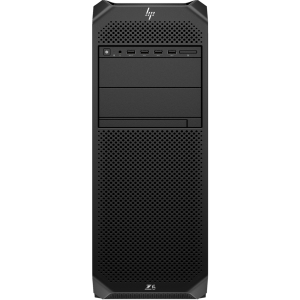
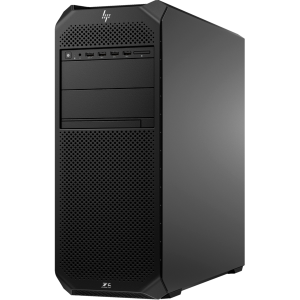
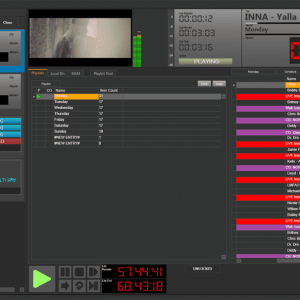

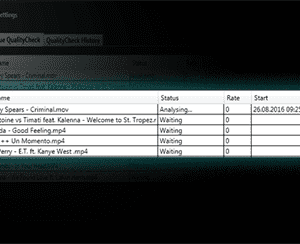
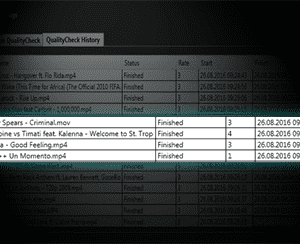
Reviews
There are no reviews yet.